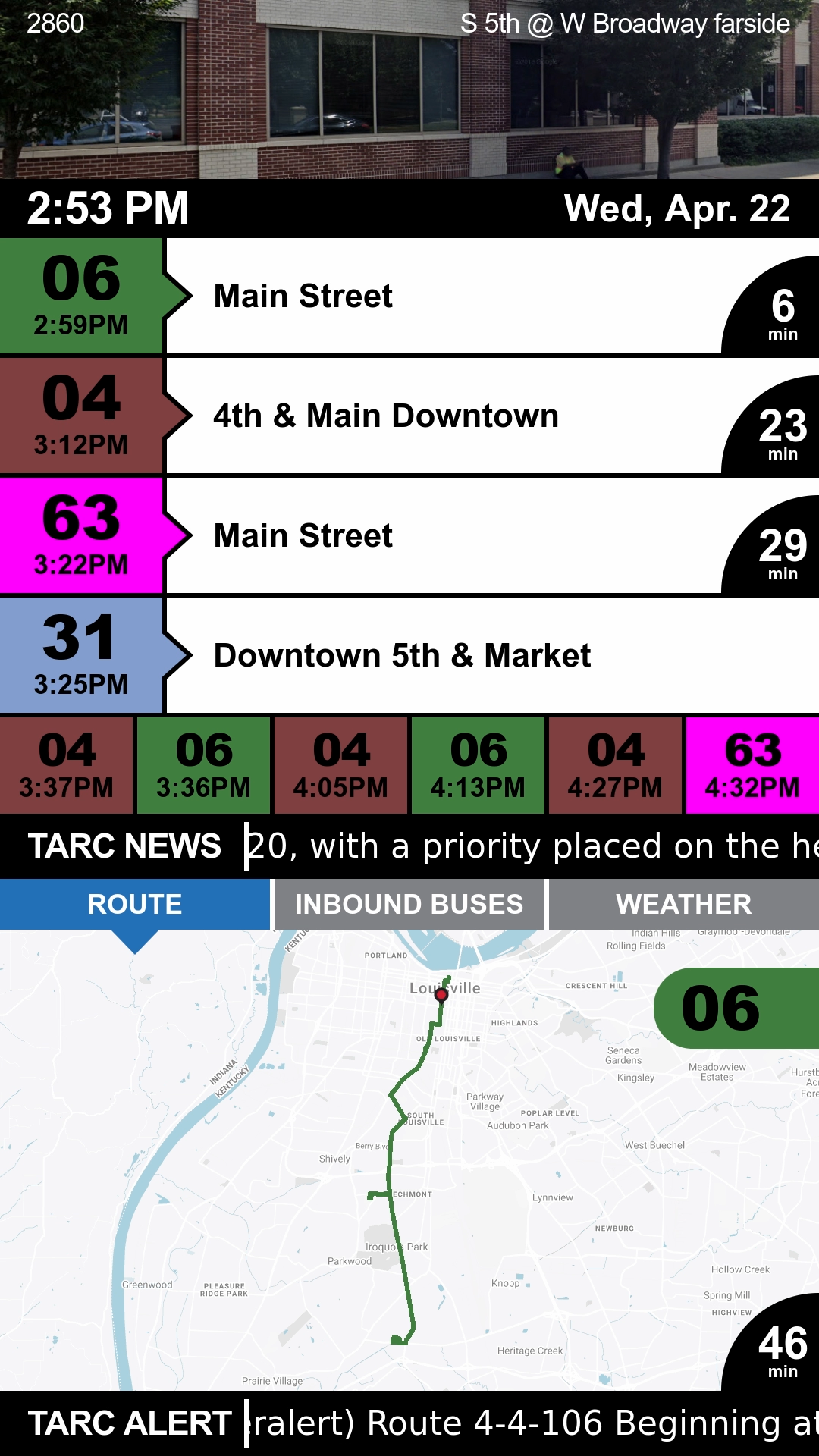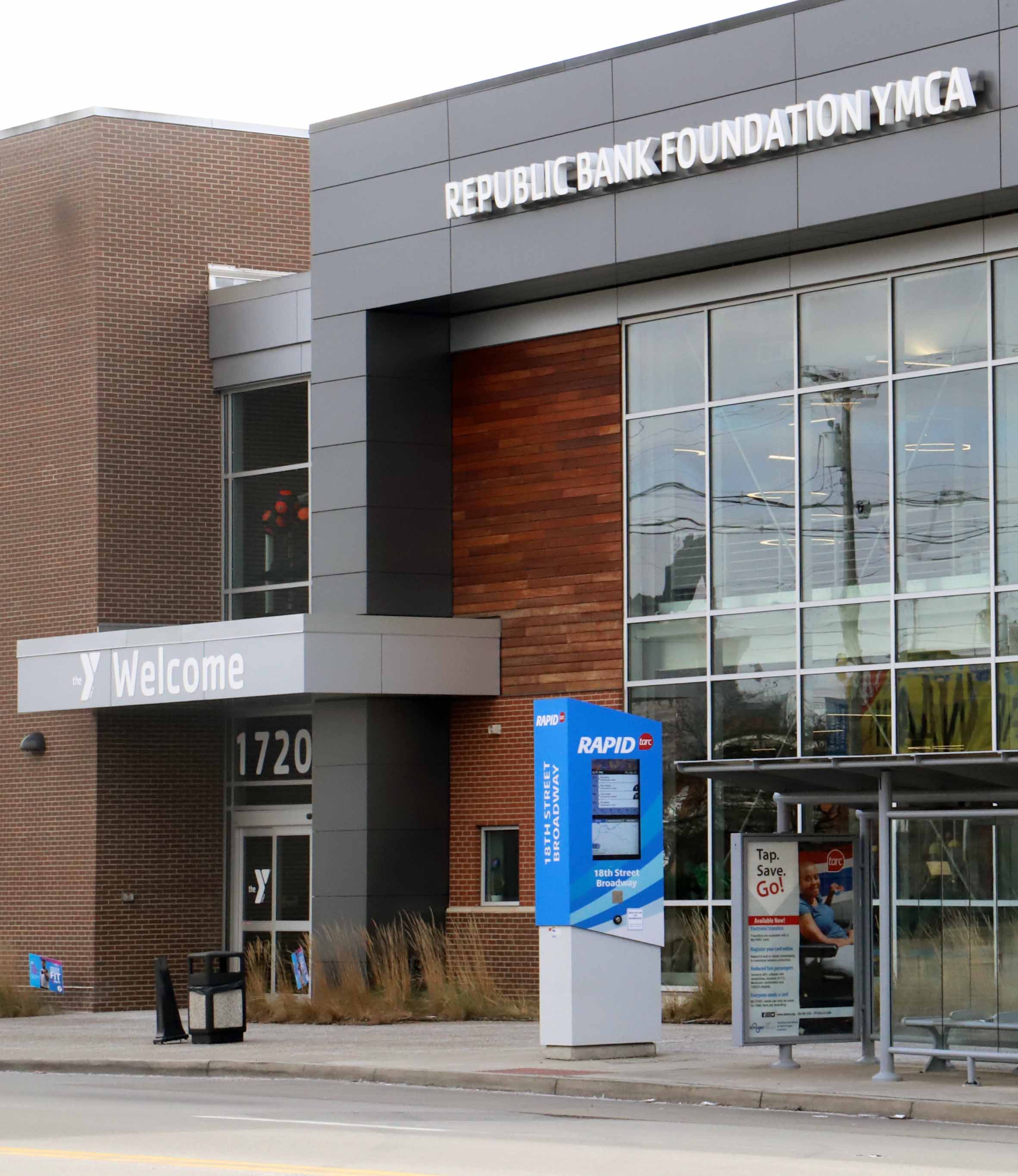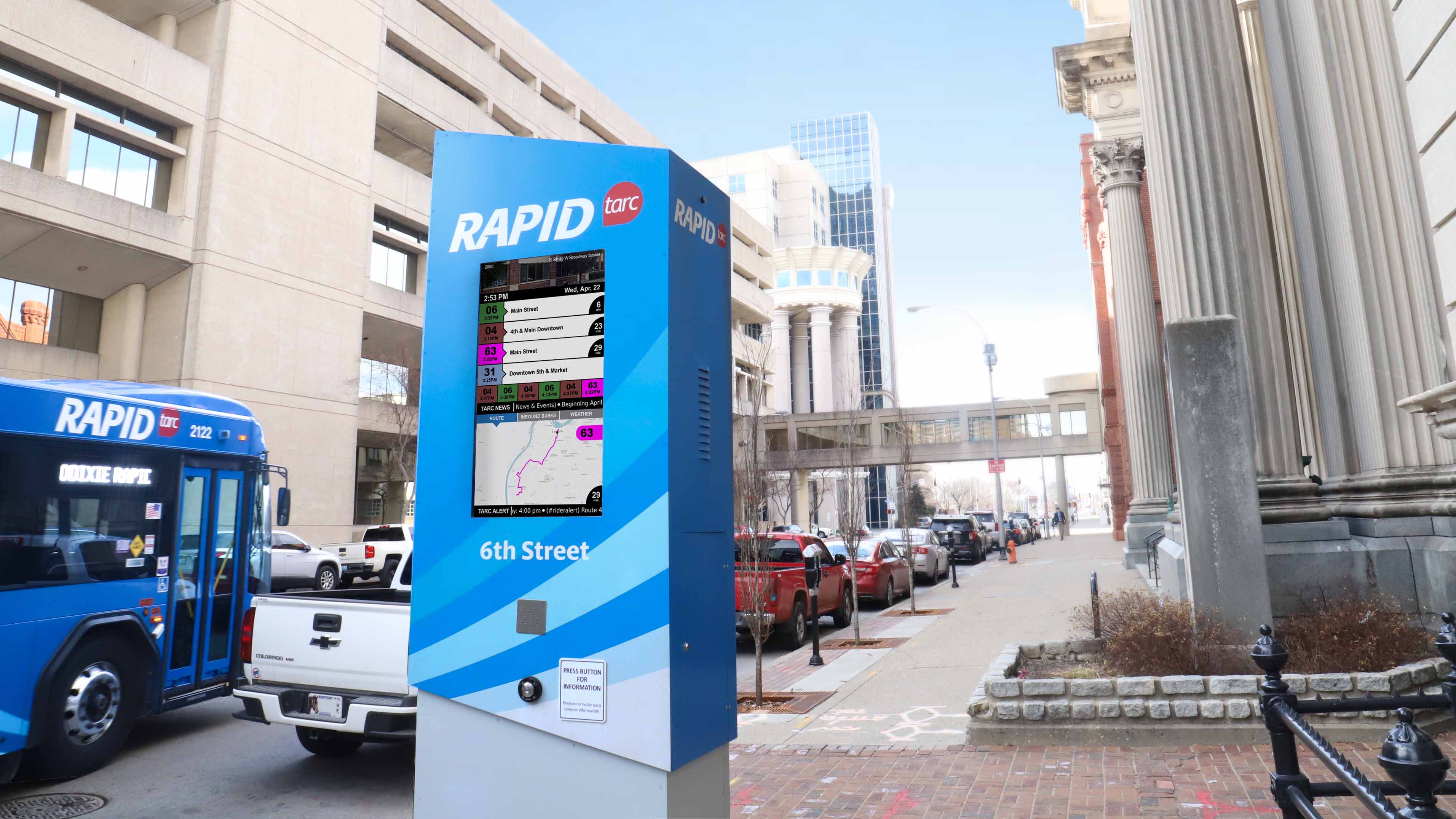Red Dot Digital Media, a specialty integrator in the digital signage space, completed a recent Metro corridor rebuild project for the Transit Authority of River City (TARC), a major public transportation provider in Louisville, KY. The project encompassed several transit components, including eight branded buses and a total of 36 stations with informatics, fiber connectivity between the corridor components, and traffic signal priority components along the corridor.
The centerpiece of the project is a network of digital kiosks located at each of TARC’s 36 transit stations. With buses continually feeding their GPS coordinates to the network, the kiosks display bus locations in real time, with accurate stop times based on bus location, route, and speed. Red Dot’s involvement encompassed the station informatics, which included the design and development of a "next bus server" application feeding location-agnostic endpoints translated to visual and spoken information to passengers waiting at the transit stations.

“Red Dot has been the stellar partner in the corridor informatics portion of the project. They’re wonderful to work with, proactive and on time,” said David Herde, TARC ITS engineer. “They provided a beautiful and functional solution that not only meets our vision and requirements, but soars above and beyond our expectations.”
[How MDM Software Benefits Digital Signage Networks, Part 1]
Red Dot designed a system with endpoints utilizing GPS dongles interfacing with BrightSign media players to supply local LAT/LON coordinates used by the "next bus server" application as required to identify the StopID of the nearest bus stop. The unique implementation means locations and stops aren’t hard-coded into the device; instead, the bus stop times are determined by local GPS coordinates and the nearest stops. Arrival data is pulled from TARC’s Google GTFS schedule feed to supply arrival information to the endpoints in real time. An override mechanism was also developed to supersede the GPS dongle coordinates and assign a particular StopID to be utilized by the player.

At each of the endpoints, a BrightSign-enabled display serves information to passengers at each transit stop. By simply pressing a button, the BrightSign player triggers audio prompts from a text-to-speech device informing passengers on when the next bus is expected to arrive. Additionally, the kiosks display next bus information for the next 10 arriving buses, with the top four displaying estimated arrival times.
[Truck Dealerships Take Digital Signage Network to the Cloud]
The kiosks also display important information about TARC Service Alerts and other information about potential disruptions. Content is displayed via a pair of informational tickers that pull Service Alert data from TARC’s Google real-time feed. One ticker displays stop-specific service alerts, and the other displays general TARC news alerts.
A large portion of each kiosk is dedicated to a rotating feed of informative content, including a complete route map, detailed map of the local stop area with the locations of incoming buses, and weather forecasts to help alert passengers to incoming weather systems.
Special care was taken to implement ADA best practices to ensure the kiosks are accessible to all, with text-to-speech functionality to verbally broadcast service alerts on demand to visually impaired passengers. Plus, the text-to-speech service alerts are available in both English and Spanish.
